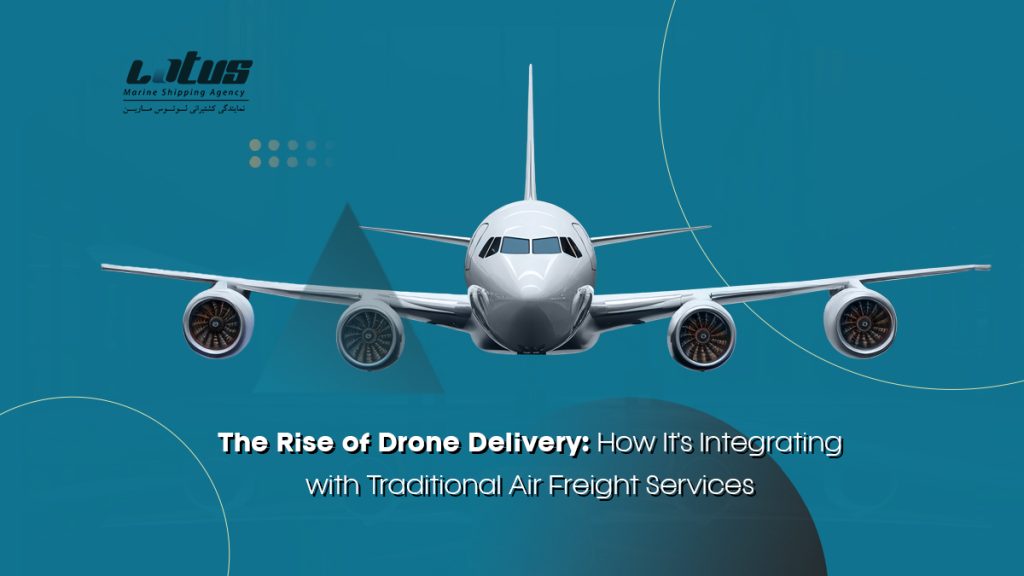Introduction
Ever wondered how your online orders could reach you even faster? Enter drone delivery, the latest buzzword in logistics. This innovative approach is revolutionizing how goods are transported, promising quicker, more efficient deliveries. But how does this new technology blend with the established air freight industry? Let’s dive into the world of drone delivery and its integration with traditional air freight services.
History of Drone Delivery
Drone delivery isn’t a concept that appeared overnight. It dates back to early experiments in the 2010s, with companies like Amazon and Google pioneering the technology. Key milestones include Amazon’s first successful delivery in 2016 and the Federal Aviation Administration (FAA) granting regulatory approvals to companies like UPS for commercial drone operations. These advancements set the stage for what we see today.
How Drone Delivery Works
At its core, drone delivery involves unmanned aerial vehicles (UAVs) equipped with advanced navigation and control systems. These drones can carry various payloads, from small packages to medical supplies. They use GPS, sensors, and cameras to navigate and avoid obstacles, ensuring a safe and efficient delivery process.
Advantages of Drone Delivery
Why all the hype about drone delivery? For starters, it’s incredibly fast. Drones can bypass traffic, taking the most direct route to their destination. This speed translates into significant cost savings, reducing the need for large delivery fleets and lowering fuel consumption. Environmentally, drones offer a greener alternative, cutting down on carbon emissions compared to traditional delivery trucks.
Challenges Facing Drone Delivery
However, it’s not all smooth flying. Regulatory hurdles are a significant challenge, with strict guidelines governing where and how drones can operate. Technical limitations, such as battery life and payload capacity, also pose problems. Moreover, safety and privacy concerns remain paramount, with the risk of accidents and potential misuse of drone technology.
Integration with Traditional Air Freight Services
So, how do drones fit into the existing air freight landscape? Traditional air freight involves large aircraft transporting goods over long distances. Drones complement this by handling the last-mile delivery, bringing packages from local distribution centers directly to customers’ doorsteps. This synergy enhances efficiency and reduces delivery times.
Case Studies
Several companies are leading the charge in integrating drones with traditional air freight services. Amazon Prime Air is perhaps the most well-known, aiming to deliver packages within 30 minutes of ordering. UPS Flight Forward focuses on medical deliveries, providing essential supplies to hospitals quickly. Meanwhile, DHL’s Parcelcopter has successfully completed numerous trial runs in remote areas, showcasing the potential of drone delivery in hard-to-reach locations.
Technological Innovations Driving Integration
The integration of drones with traditional air freight is driven by technological innovations. Artificial intelligence and machine learning enhance navigation and obstacle avoidance. Advanced navigation systems, including real-time traffic data, help drones find the most efficient routes. Improved battery life and increased payload capacity further extend the range and utility of delivery drones.
Economic Impact of Drone Delivery
Economically, drone delivery offers substantial benefits. Businesses can reduce costs associated with traditional delivery methods, such as fuel and labor. However, there’s a flip side. While new jobs in drone maintenance and operations are created, there’s also potential displacement of traditional delivery roles. Balancing these impacts is crucial for the industry’s sustainable growth.
Environmental Considerations
From an environmental perspective, drones offer a significant advantage. They produce fewer emissions compared to traditional delivery vehicles, contributing to a lower carbon footprint. A comparative analysis shows that drones, especially those powered by renewable energy sources, are a greener option for urban deliveries.
Future Trends in Drone Delivery
Looking ahead, the drone delivery market is poised for rapid growth. Predictions suggest a multi-billion dollar industry within the next decade. Emerging technologies, such as swarm robotics and autonomous delivery networks, will further transform the landscape, making drone deliveries more common and efficient.
Global Adoption of Drone Delivery
Globally, several countries are at the forefront of drone delivery adoption. The United States, China, and Australia lead in implementing drone delivery services, supported by progressive regulations. International standards are also evolving, aiming to create a unified framework for global drone operations.
Consumer Perception and Acceptance
Public perception plays a crucial role in the success of drone delivery. While many are excited about the convenience, concerns about noise, privacy, and safety persist. Addressing these issues through robust regulations and transparent operations is key to gaining widespread consumer acceptance.
Potential Applications Beyond Parcel Delivery
Drones aren’t limited to just delivering parcels. They hold immense potential in various sectors. In healthcare, drones can deliver critical medical supplies and vaccines to remote areas. In agriculture, drones are used for monitoring crops and spraying pesticides, showcasing their versatility.
Conclusion
The rise of drone delivery marks a significant shift in the logistics landscape. By integrating with traditional air freight services, drones offer a faster, more efficient, and environmentally friendly delivery option. While challenges remain, technological advancements and regulatory progress are paving the way for a future where drone delivery becomes a norm.
FAQs
What are the main benefits of drone delivery?
Drone delivery offers speed, cost-efficiency, and a reduced environmental impact compared to traditional delivery methods.
How are drones regulated for delivery?
Drones are regulated by aviation authorities like the FAA, which set guidelines for their safe operation, including airspace restrictions and pilot certifications.
What companies are leading in drone delivery?
Amazon, UPS, and DHL are among the leaders in developing and implementing drone delivery services.
How does drone delivery affect traditional jobs?
While drone delivery creates new jobs in drone maintenance and operation, it may also displace some traditional delivery roles.
Is drone delivery safe?
Yes, with proper regulations and advanced technology, drone delivery is safe. Companies invest heavily in ensuring their drones can avoid obstacles and operate safely.







